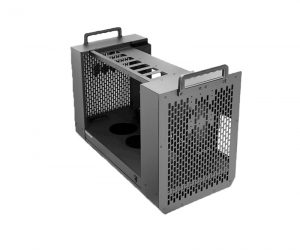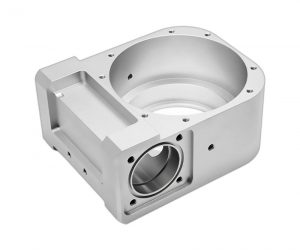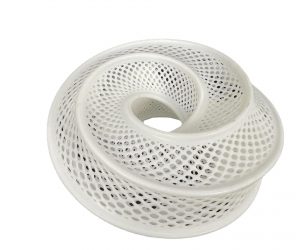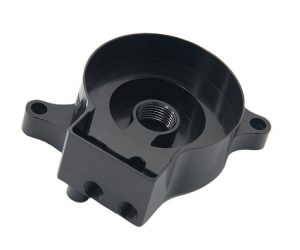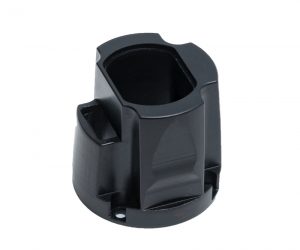Designing and assembling an injection mold is a complex task that requires careful planning, professional engineering knowledge, and attention to detail. Here is a guide to help you complete the design and assembly of injection molds step by step:
Firstly, you need to clarify the requirements of the final product and the type of plastic material to be used.
Then, collect the specification information of the mold, including part dimensions, tolerances, surface treatment, and production volume.
Next is the mold design phase:
- Create a 3D CAD model that includes the core, cavity, and other necessary components.
- When designing, consideration should be given to parting lines, ejector systems, cooling channels, and exhaust issues.
Choosing mold materials is also important:
Choose appropriate mold materials based on the complexity of the parts, production volume, and material compatibility. The commonly used mold materials include tool steel, stainless steel, and aluminum.
When manufacturing molds:
Use CNC machining or electrical discharge machining (EDM) to produce mold components with high precision.
Afterwards, the mold components are subjected to heat treatment to achieve the required hardness and durability.
When assembling the mold:
Align and clamp the core, cavity, and plug-in components correctly.
Ensure that all components are perfectly matched to avoid leaks or defects during the injection molding process.
Design and install an ejector system, including ejector pins or sleeves, to release molded parts from the mold after injection molding.
Integrate cooling system into mold design to regulate temperature during injection molding process. The location of the cooling channel should be strategically placed to ensure uniform cooling and reduce cycle time.
Provide appropriate exhaust to allow air and gas to escape during injection molding, preventing defects such as voids and burning.
Polish the surface of the mold to achieve the required surface finish for the molded part.
Conduct mold testing and validate the design based on sample materials to identify any potential issues.
Make necessary adjustments and improvements to the mold design until satisfactory results are achieved.
Once the mold is assembled and tested, it can be used in the injection molding machine.
Inject plastic material into the mold cavity and close the mold to form the final product.
Regularly inspect and maintain molds to ensure their optimal performance and lifespan.
Implement quality control measures to monitor molded parts and detect any defects or variations.
Designing and assembling injection molds is a process that requires the joint efforts of skilled designers, engineers, and mold manufacturers. This process requires careful planning, attention to details, and continuous improvement to achieve optimal mold design and ensure efficient and stable production of high-quality plastic parts.
Injection molds are tools used for making plastic parts by injecting hot, melted material into a mold. This process is called injection molding and it's widely used to make lots of identical parts quickly. These parts come out with tight tolerances and can be designed flexibly. In this article, we'll break down how to design and put together an injection mold and what you need to think about along the way.
First, let's talk about designing an injection mold. Designers start by figuring out the basic structure based on what the part looks like, how big it needs to be, and what it has to do. They decide important stuff like how many cavities there will be, where the gates (where the melted material goes in) will be, and how the mold will cool down. They also have to think about how the material flows and shrinks so that the part pops out easily and meets the size requirements.
When designing an injection mold, there are a few more things to consider:
- Parting Surface: This is where the mold splits open. It’s important for getting the part out and cleaning the mold.
- Gate System: This controls how fast and where the melted material enters the mold. The design needs to ensure even filling and avoid defects.
- Cooling System: Helps control how fast the part cools down and its temperature distribution. This affects the part's stability and strength.
Once the design is done, the next step is putting the mold together. You need to carefully check each part to make sure they fit well and stay stable. Pay attention to aligning parts, especially the cavity and gate system, to fill accurately and avoid defects. Also, check that the mold seals properly to prevent leaks or overflows.
There are a few extra things to keep in mind:
- Lifespan and Maintenance Costs: Use strong materials and reliable components to make the mold last longer and cut down on maintenance costs.
- Production Efficiency and Cost: Optimize the mold structure to improve efficiency and reduce production costs.
- Safety and Environmental Impact: Ensure the mold is safe for operators and minimizes environmental impact.
In short, injection molds are crucial for making plastic parts. Designing and assembling them involves thinking about many factors like part shape, material flow, and maintenance costs. With smart design and careful assembly, you can achieve high-quality, efficient, and cost-effective production.
Introduction
Injection molding is a way to make lots of the same plastic parts quickly and accurately. It starts with melting plastic pellets, then squeezing them into a mold under pressure. The molten plastic cools down and hardens inside the mold, forming the part.
The mold is key in this process. It has two main parts: the cavity and the core. The cavity is like a hollow area that shapes the outside of the part, while the core makes the inside features. These are usually attached to two separate plates – one fixed, one moving – that open and close during molding.
How good an injection mold works depends on how well it’s designed and put together. A smartly designed and assembled mold can create high-quality parts with hardly any mistakes. But if it's poorly done, you might end up with issues like warping, cracking, or other defects. So, following some basic rules and best practices when designing and setting up an injection mold is crucial.
Injection molding is great for making detailed and top-notch plastic items. But to get the best results, you need a mold that fits both your product and the manufacturing needs. In this article, we'll cover the basics of designing and putting together an injection mold, along with tips and best practices to help you succeed.
Injection Mold Design
The design of an injection mold is a complex and iterative process that involves many factors and considerations. Some of the main aspects of injection mold design are:
- Mold Type:
- The type of mold depends on the shape, size, and quantity of the product, as well as the molding machine and material. There are two basic types of molds: cold runner molds and hot runner molds. Cold runner molds use a channel to deliver the molten plastic from the nozzle to the cavity, while hot runner molds use a heated manifold to keep the plastic in a molten state until it reaches the cavity. Hot runner molds can reduce material waste and cycle time, but they are more expensive and require more maintenance than cold runner molds.
- Mold Material:
- The material of the mold affects its durability, wear resistance, corrosion resistance, thermal conductivity, and cost. The most common materials for injection molds are steel and aluminum. Steel molds have higher strength and hardness, but they are heavier and more difficult to machine than aluminum molds. Aluminum molds have better thermal conductivity and machinability, but they are softer and more prone to deformation than steel molds.
- Part Design:
- The design of the part influences the moldability, quality, and functionality of the product. Some of the key factors to consider in part design are wall thickness, draft angle, ribs, bosses, undercuts, holes, threads, inserts, and surface finish. These factors affect the flow, cooling, shrinkage, warping, ejection, and appearance of the part.
- Runner System:
- The runner system is the network of channels that connects the nozzle to the cavity. It consists of a sprue, a main runner, sub-runners, and gates. The runner system affects the pressure drop, temperature distribution, filling balance, and material usage of the molding process. The runner system should be designed to minimize material waste, pressure loss, heat loss, and cycle time.
- Cooling System:
- The cooling system is the arrangement of cooling channels that circulates a coolant (usually water) through the mold to remove heat from the plastic part. The cooling system affects the cycle time, dimensional accuracy, warping, shrinkage, and quality of the part. The cooling system should be designed to provide uniform and sufficient cooling to all areas of the part.
- Ejection System:
- The ejection system is the mechanism that ejects the part from the mold after it has solidified. It consists of ejector pins, ejector plates, ejector rods, springs, and other components. The ejection system affects the cycle time, surface quality, deformation, and damage of the part. The ejection system should be designed to provide smooth and reliable ejection without leaving marks or defects on the part.
Injection Mold Assembly
The assembly of an injection mold is a critical step that requires careful attention to detail and quality control. Some of the main steps of injection mold assembly are:
- Mold Parts Inspection: Before assembling the mold parts, they should be inspected for any defects or damages that may affect their performance or compatibility. Any defective or damaged parts should be repaired or replaced before proceeding to the next step.
- Mold Parts Cleaning: After inspecting the mold parts, they should be cleaned to remove any dust, dirt, oil, grease, or other contaminants that may affect their function or cause corrosion. The mold parts should be cleaned with a suitable solvent or detergent and dried thoroughly before proceeding to the next step.
- Mold Parts Fitting: After cleaning the mold parts, they should be fitted together according to the design specifications and drawings. The mold parts should be aligned properly and checked for any gaps or interferences that may affect their fit or function. Any adjustments or modifications should be made before proceeding to the next step.
- Mold Parts Fastening: After fitting the mold parts together, they should be fastened securely using bolts, screws, pins, clamps, or other methods. The fastening method should ensure that the mold parts are firmly attached and do not loosen or shift during operation. The fastening torque should be applied according to the manufacturer's recommendations or industry standards.
- Mold Testing and Debugging: After fastening the mold parts together, they should be tested and debugged to verify their functionality and performance. The testing and debugging process may involve installing the mold on a molding machine, injecting plastic material into the cavity, measuring the dimensions and quality of the part produced by using various instruments such as calipers micrometers gauges etc., checking for any defects or problems such as flash short shots sink marks etc., adjusting or correcting any parameters or settings such as temperature pressure speed etc., repeating until satisfactory results are achieved.
Conclusion
Designing injection molds and assembling them are crucial steps in the injection molding process, as they directly affect the success of the product. If you follow some basic principles and steps, and apply some techniques and best practices, you can create injection molds that meet your needs and expectations.
